- Home
- Equipment Reviews
-
Amplification Digital Integrated Mono Block Preamplifier Phono Solid State Tube Analog Sources Cartridges Tape Tone Arms Turn Tables Digital Sources Digital Disc Players DACs Music Servers Streaming Music Services
-
Accessories Power Conditioners Room Accoustics Racks & Stands Audio Software Other iPod iPod Speakers iPod Headphones iPod Transports Headphones Over Ear On Ear In Ear Headphone Amplifier
-
- Audio News
- Event Reports
- California Audio Show, San Francisco
- Consumer Electronics Show
- T.H.E. Show
- Rocky Mountain Audio Fest
- AXPONA
- Salon Son & Image
- Hi-Fi Show & AV Expo
- High End
- Lone Star Audio Fest
- Capital Audio Fest
- TAVES - Toronto Audio Video Entertainment Show
- AK Fest
- Home Entertainment Show
- New York Audio $ AV Show
- Open House Events
- Spotlight
- Music
- The Columns
- 2024 California Audio Show
Latest Reviews & Audio News
-

PS Audio AirLens and DirectStream DAC Mk2 Review
(July 26, 2024) -

Audio Note UK Meishu Tonmeister 300B integrated amplifier, P3 Tonmeister stereo amplifier, M6 Phono Balanced Preamp Review
(July 12, 2024) -

Douglas Schroeder’s One Year Exploration of Digital Front End Systems
(June 25, 2024) -

Arya Audio Labs RevOpods Anti-Vibration Feet Review
(June 25, 2024) -

Lego Icons Retro Radio Review
(June 14, 2024) -
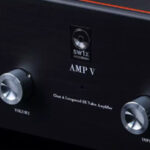
SW1X Audio Design AMP V “Titan” Special directly-heated triode integrated amplifier Review
(June 14, 2024) -
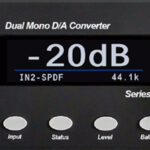
Bricasti Design Model 1 Series II D/A Converter and M5 Network Player Review
(May 24, 2024) -
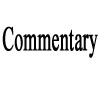
Star Wars – The Empire Strikes Back – In Concert, May 2, 2024
(May 20, 2024) -
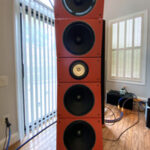
PureAudioProject Quintet15 with Voxativ AC-X field-coil open-baffle loudspeaker system Review
(May 20, 2024) -
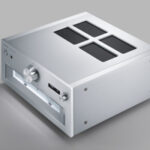
Technics SU-R1000 reference stereo integrated amplifier Review
(May 20, 2024) -
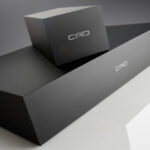
Computer Audio Design GC 1.1 & GC3.1 Ground Control external grounding systems Review
(May 20, 2024) -

Andy Grove of Audio Note UK on IO LTD
(March 23, 2024) -
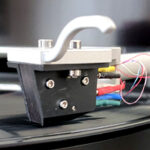
Audio Note UK IO Limited field-coil cartridge system Review
(May 20, 2024) -
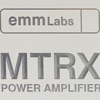
EMM Labs MTRX monoblock Input Board Upgrade Review
(March 7, 2024) -

May 2018 Sibelius Violin Concerto concert video via Berliner Philharmoniker Digital Concert Hall app
(February 16, 2024)
-
Categories
-
Amplification Digital Integrated Mono Block Preamplifier Phono Solid State Tube Analog Sources Cartridges Tape Tone Arms Turn Tables Digital Sources Digital Disc Players DACs Music Servers Streaming Music Services
-
Accessories Power Conditioners Room Accoustics Racks & Stands Audio Software Other iPod iPod Speakers iPod Headphones iPod Transports Headphones Over Ear On Ear In Ear Headphone Amplifier
Site Sections
Copyright ©1996-2024 All Rights Reserved.
Popups Powered By : XYZScripts.com

Publisher’s Note: This Commentary is first published in the Offiical Directory of the 2nd (July 15 – 17, 2011) California Audio show.
Audiophiles in 2011 have it REALLY EASY.
Back in the early days of what would now be considered “high-end” audio, choices in the world of high performance component audio were extremely limited. In fact, the baseline for what would be considered “high performance” was just being developed and established through a series of ground-breaking products and high-end journals that explored these products in their writings. The speed of innovation and resulting steep learning curve seemed greatest in the 60’s, 70’s and early 80’s while this nascent niche was germinating into what has become a hobbyist powerhouse.
Don’t get me wrong, the marketplace in the 1970’s and 80’s was chock full of plenty of mid-Fi offerings from Japan and US alike, but precious little else. Sure, there were exceptions, but at the end of the day nearly anything audio-related of any significance fit neatly into an annual directory that was published by Audio magazine. This annual audio equipment book became known as the industry “Bible.” I’m guilty of having all of them in my library; some are even hard-backed. Reading those things from cover to cover and waiting for the hopelessly delayed and ever-late issues of TAS in the U.S. Mail were really the only way we audio hobbyists could do in the pre-worldwide web era.We audiophiles who are now of a certain age, had very little knowledge of what high-end was all about back in those days.
We learned through reading the specialty journals of the day, and we hung out in Audio Shops that were in as steep a learning mode as were we customers. Sure, inevitably much was misinterpreted and misunderstood about what we were hearing from this early equipment. Writers and reviewers eagerly sought out terms and flowery adjectives that would help describe what they heard from this equipment. This led to the creation of that common language of high-end audio-speak that we take for granted today. At first, no one knew what the heck these guys were writing about. They were using adjectives and terms that were totally alien to music critiquing. However, in time, it all came together and the lingo was established. I look back at these writings and reviews, particularly phono cartridges and turntables, and sometimes I can’t help but laugh. There was so much that was not known back then, so many assumptions that we now know were dead wrong, and so many conclusions that clearly went in the wrong direction. Who knew that recordings pressed on vinyl were far ahead of development of phono cartridges that could do the music and record quality justice? Who knew that the earliest of moving coil cartridges were far and away better than the associated equipment that was available at the time to amplify them? Well, we certainly know that to be true now. That’s just one example. Does this sound at all familiar?
We are now over 20 years into the era of digital audio’s promise of ‘Perfect Sound Forever.” History has certainly found a way of repeating itself – we are finally getting a grip on how to reproduce recorded music pressed on vinyl. Yes indeed, there is no doubt that “perfection” or close to it, in the form of a digital stream, has been around since the beginning. However, it has taken the full 20 years for the playback equipment and associated technology to catch up to the promise of the source data stream. In those 20 years writers have waxed poetic about CD transport designs, the existence of jitter, digital-to-analog conversion standards, digital recording standards, and endless tweaks to “fix” what ails the medium.
So really, we have gone full circle. The amount of information available to the audiophile today on any given subject is mind-boggling, thanks to the worldwide web. Thanks to a truly global marketplace, the sheer number of product offerings available couldn’t possibly be published in a comprehensive annual product directory, and the number of print magazines, webzines, journals, and blogs that are dedicated to the hobby of 2-channel audio reproduction seems to grow every single day. However, with all that, we individually and collectively are still on an endless journey to understand what we hear and why we hear it. No doubt, the journey is a blast, and I for one would not trade the learning experience, missteps and all, for anything in the world.
….On second thought, maybe audiophiles today have no easier time of it in 2011, than we older audiophiles had in 1975!